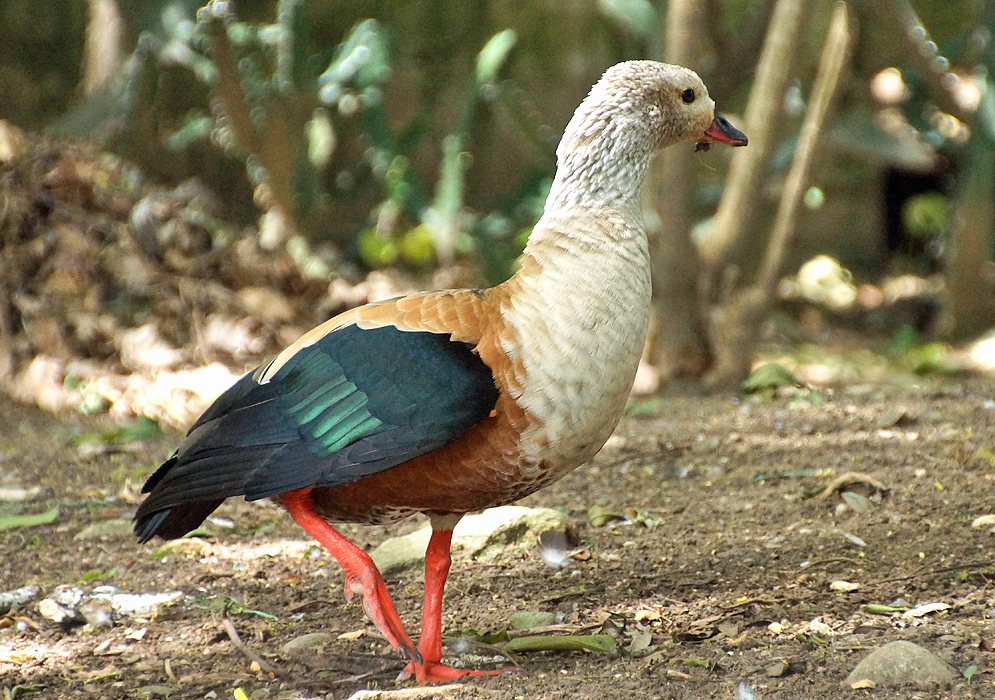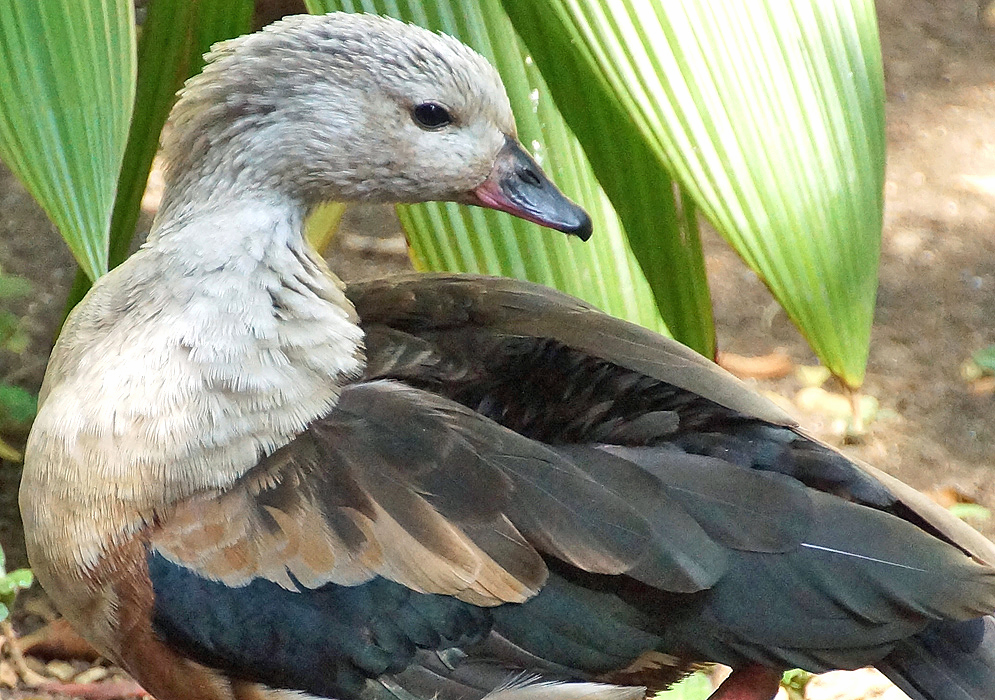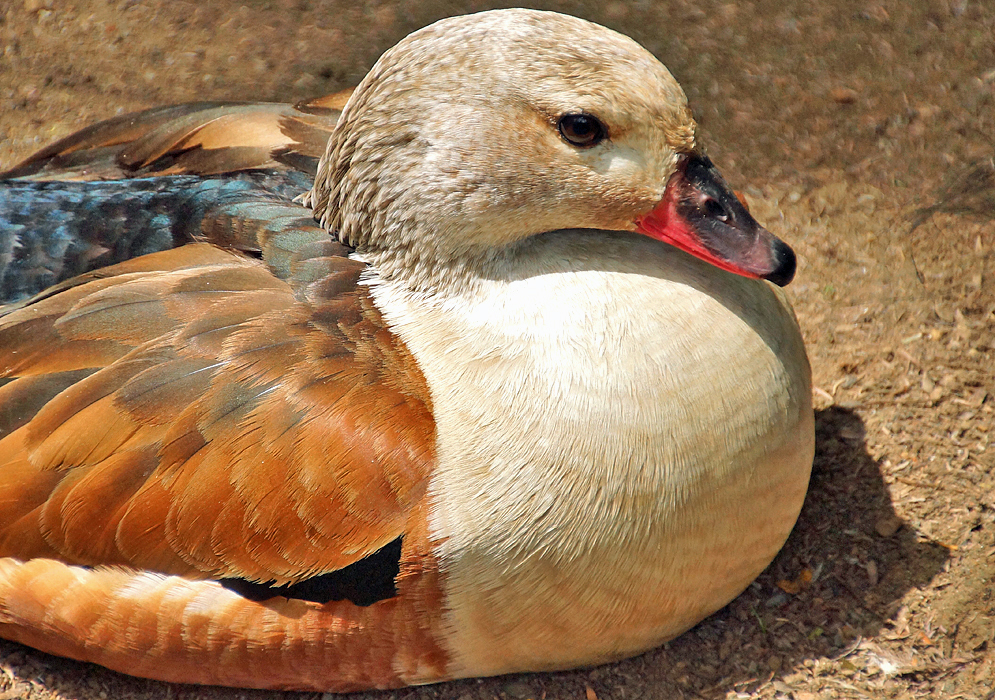This post has 11 Simple Fields-fields attached. Show fields.

The Orinoco goose is characterized by an off-white head, neck, and breast, with males displaying more pronounced coloration than females. The male's mantle is gray with white scalloping, and they sport an orange band across the upper mantle. Their wings are black with a wide white speculum, while their bill has a black maxilla and a mostly red mandible. The females, though similar in pattern, have a more subdued coloration. This species is primarily found across a wide range of South America, with its distribution extending from Venezuela through Colombia, eastern Ecuador, eastern Peru, and Bolivia, reaching as far as northern Argentina. Additionally, a significant population spans across central Brazil. The Orinoco goose prefers habitats such as wet savannas and the edges of large freshwater wetlands. During the wet season, they inhabit these areas, and in the dry season, they can also be found on river beaches and oxbow lakes within the Amazon Basin. The Orinoco goose is currently classified as Near Threatened by the International Union for Conservation of Nature (IUCN). The estimated population ranges between 10,000 and 25,000 mature individuals. This population is experiencing a slow to moderate rate of decline, primarily attributed to hunting and habitat conversion for rice cultivation. Conservation efforts for this species are crucial, especially focusing on protecting river margins, sandy beaches along main river channels, and migration routes. The Orinoco goose is a herbivore, primarily feeding on leaves and seed heads of grasses and occasionally on aquatic algae. They are known to forage mostly during the day in open areas near water and sometimes at night. The species exhibits strong year-round pair bonds and is intensely territorial during the breeding season. Males guard females during the incubation period, and the species is sometimes observed engaging in brood parasitism, where a female may lay eggs in another's nest. Photographed in the Cacua Valley, Colombia.





